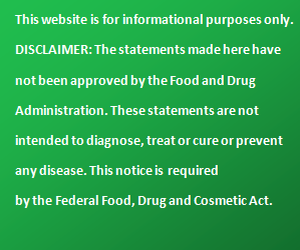How Can Food Fight Cancer?
Obviously, there are a lot of factors involved in whether or not someone develops cancer. Modern science has not isolated all of them, but certain foods do tend to have nutrients that seem to help the body regulate cell growth and keep damaged cells from turning into a tumor.
Antioxidants in particular are known to help with this effect. You’ve probably heard of them, but you may not know where to find them. Should you take a supplement? Dietary experts advise against simply getting any nutrient from supplements.
You should try to get as much as possible from your diet, as the body absorbs nutrients better this way. This means that you should include many different types of foods, but fruits and vegetables tend to be especially important.
Diet Recommendations
These are some of the tips the American Cancer Society offers to create an eating plan that will help lower your chance of developing cancer:
• Eat plenty of fruits and vegetables. This doesn’t just mean the total amount – most people know about the five-a-day concept. You also need to make sure to include many different types of produce in your diet.
• Choose smaller portions, especially of high-calorie foods. Remember that low-fat is not the same as low-calorie, and check labels and serving sizes carefully. But also remember that you don’t have to cut these foods out of your diet completely!
• Maintain your eating rules even when eating out. An indulgence or two is okay, but try to pick lower calorie options and smaller servings. This may mean splitting orders.
• When drinking juice, you sho uld choose only 100% juice and avoid ones loaded with sugar or high fructose corn syrup.
uld choose only 100% juice and avoid ones loaded with sugar or high fructose corn syrup.
• For breads, pasta, and cereal, go for more natural choices and whole grain alternatives, and limit more sugary or processed foods.
• When making meat dishes, try to use fish or poultry rather than red meats like beef and pork. Go for lean cuts and bake, broil, or poach your dishes rather than frying them.
• Keep your alcohol consumption limited as well – a drink or two is not a problem, but binges are unhealthy.
Tips on Working Produce into Your Diet
Most people know that they should eat plenty of produce, but they may not be sure how to actually do so. The American Dietetic Association has a few ideas on how to increase your intake up to the recommended amount.
• Remember that you don’t have to eat them all separately. Large servings of stews, stir-fries, or salads that include different vegetables can count as multiple servings.
• Use crunchy raw vegetables as snacks and keep them accessible. Many of us have snacking habits, but we’ll tend to eat what is most accessible. Pick a few vegetables like carrot sticks that you like and are easy to eat.
• Put leafy greens in your sandwiches. Try to use darker greens like spinach rather than plain lettuce.
• Use fruit, nuts, or seeds (like sesame seeds and pumpkin seeds) to top dishes like cereals and salads.
• Try mixing tomatoes or beans into casserole style dishes. They can make them much more nutritious without changing the flavor too much.


Leave a Reply